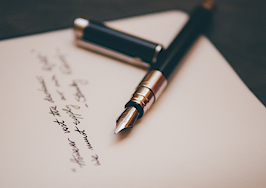It’s 2 a.m. in the morning when a knock on the door wakes you from a sound sleep. When you answer the door, an exhausted-looking sheriff orders you to evacuate your home within the next 15 minutes due to a rapidly approaching wildfire. How prepared would you be to run for your life? Equally important, how can you help your community be prepared for when a major disaster strikes?
Whether it’s an earthquake, fire, flood, hurricane or some other natural disaster, almost everyone is woefully unprepared for that moment when they have to quickly evacuate to a safe place.
Coni Meyers, a former FEMA inspector, crisis management expert and author of a new disaster preparedness certification program (CKM Certification Program) for Realtors, explained how woefully unprepared most people are.
According to Meyers, over 60 percent of Americans believe they will be impacted by a disaster in the next three to five years. Considering that percentage, however less than 35 percent of people are prepared with a disaster supply kit or evacuation plan
In fact, Meyers said that only 15 percent have created a disaster plan to protect their finances, while 27 percent have taken no steps at all to prepare in case a natural disaster strikes.
2020: The year of unprecedented national disasters
As if the COVID-19 pandemic wasn’t bad enough, 2020 had six types of natural disasters that never happened before or that happen very rarely. These included 30 named storms, two hurricanes in the Gulf of Mexico simultaneously, a severe derecho (sustained sideway winds) which swept through the Midwest with peak speeds of 126 mph, and a single storm that generated 50 tornadoes.
To top it off, 4 million acres in California burned in 2020, smashing the old record from 2018 of 4 million acres burned. Due to the current extreme drought conditions on the West Coast, the 2021 fire season may be even worse than 2020.
Assess your level of preparedness
How prepared are you for a major disaster? You can figure out your level of preparedness by answering the following questions:
- What’s your system for receiving emergency alerts and warnings, especially if there is no electricity?
- What special needs do members of your household have, and what types of special accommodations will they need in a major disaster?
- What is your specific emergency plan for each member of your household when they are at home and when they are away from home?
- How will you contact each member of your household if you become separated?
- What is your evacuation plan for your home, your workplace or for any other place where you spend your time?
- Do you have sufficient cash in small bills to pay for food and lodging if you are unable to use your credit cards or ATM?
Begin the preparation process by documenting your possessions
One of the most heartbreaking situations occurs when people lose treasured possessions, especially their photos. If you haven’t digitized your photos already, do so immediately.
For insurance purposes, it’s critically important to document what you have. Take detailed pictures and videos of both the interior and exterior of your house (including the garage or any other buildings on the property).
Also photograph the contents of every drawer and closet in your property. Save these on a travel drive you take with you, and load them into Dropbox, Google Drive or other Cloud storage site.
Prepare your emergency kits
Meyers recommended that you create multiple kits (at least four) based on the nature of the emergency, how much time you have to get out, and the kinds of needs you and your household have. The primary kits you will need to prepare include:
1. For your home
Key items from this list include cash, important documents and papers, nonperishable food, medications, water, battery powered radio, flashlight, whistle, first aid kit, solar cellphone chargers and other supplies.
2. A grab-and-go bag
When you have only minutes to evacuate, this is the most important emergency kit you can have prepared. You will need a separate kit for each person in your household. A backpack is often a great option.
Again, you’ll need cash in small bills, ready-to-eat food and water, medications, toiletries, seasonal clothing, emergency blanket, pen, notepad, whistle, copies of your digitized documents on a thumb drive, solar-powered chargers, battery powered radio and a flashlight along with extra batteries.
3. A kit for your car
Disasters can strike at any time and in any place. Be sure your car has jumper cables, flares or a reflective triangle, cellphone charger, blanket or space blanket, map, ice scraper (for colder climates) plus cat litter or sand for better tire traction.
4. If you work outside your home, a kit for where you are employed
This can be a modified grab-and-go bag that you carry with you or secure in an easily accessible location where you work.
5. Additional kits
You will need special kits for each child, anyone with special needs (include medications, oxygen, etc.) plus an evacuation plan for anyone who is unable to leave without assistance.
How Realtors can help their communities prepare
One of the best ways to market your business is to be of service to your community. Below are five ideas of how you can help your community prepare for a disaster while also providing great exposure for your business.
- Help present and past clients prepare for disasters by using one of the 360-camera apps to make a video of the exterior and interior of their home. (Have them shoot the contents of their closets and drawers).
- Use HomeDisclosure.com to inform buyers, sellers and other people in your community about the risk level from various types of natural disasters that can occur where they live. Be sure to provide this information for incoming and outgoing relocation clients as well.
- Use your print, digital and social media marketing to encourage homeowners to review their insurance to determine if they need to add additional coverage. This assessment should examine whether the homeowner has full replacement coverage plus any additional coverages such as earthquake, fire or flood insurance.
- Partner with local businesses and charities to put together emergency kits for a local school or for families that lack the resources to do it themselves.
- Give a closing gift of preparedness. Have each household member’s name embroidered on their own grab-and-go bag or backpack. Fill these with items they may not have on hand including a solar-powered phone charger, battery powered radio, walkie-talkies, first aid kit, whistle and emergency blanket.
When a disaster does strike
Use Meyers’ four-step STOP model to help you and your family stay calm during the emergency:
- Stop what you are doing, and pause for a minute.
- Take three deep breaths to notice what you are feeling.
- Carefully observe exactly what the current situation is.
- After assessing the situation, take action based on your plans, and modify them as needed.
Most importantly, if you are told to evacuate, do so!
Victim or victor — which one would you be?
If you or your community face a major natural disaster, Meyers said the people who are most likely to recuperate from the disaster are those who have a positive mindset. Their attitude is, “Even though we have experienced a horrible loss, we are alive and can rebuild.”
The best way to come through a natural disaster is to take the necessary steps now to be prepared for when the unthinkable actually does occur.
Bernice Ross, President and CEO of BrokerageUP and RealEstateCoach.com, is a national speaker, author and trainer with over 1,000 published articles. Learn about her broker/manager training programs designed for women, by women, at BrokerageUp.com and her new agent sales training at RealEstateCoach.com/newagent.













